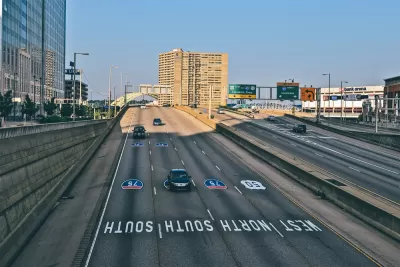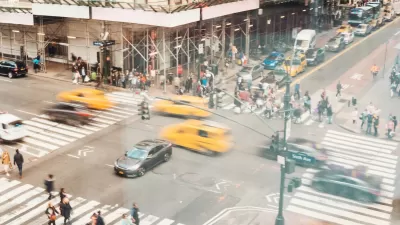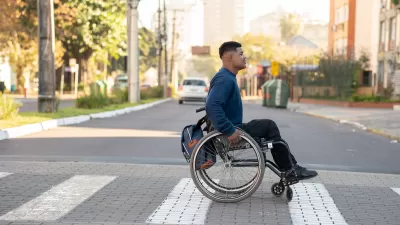Pedestrian fatalities are rising, and one city council candidate has had enough.

Cincinnati City Council candidate Derek Bauman would like to talk to you about traffic safety.
The city is in the midst of "a public safety crisis of immense proportions," the former police officer writes in the Cincinnati Enquirer. The statistics are damning: Since 2013, crashes involving pedestrians have risen nearly 50 percent. In 2018, more than one person was a struck by a car each day. And in the first three months of the current school year, 13 public school students were hit by cars on their way to or from school.
Bauman's proposed solution is for the city to adopt Vision Zero, a commitment to zero traffic fatalities that combines policy changes, street design, and more. That approach is supported by Cincinnati Mayor John Cranley, who recently promised to increase traffic enforcement and street improvements in the city.
Several smaller cities around the country have successfully eliminated traffic fatalities by implementing a Vision Zero framework, while larger cities have had more mixed results—thanks in part, advocates say, to a lack of political leadership. "Successfully implementing Vision Zero in Cincinnati would involve bringing together traffic engineers, public safety personnel, education professionals, public health professionals, members of the public and other stakeholders to work collaboratively toward our own shared goal of zero fatal and serious injury crashes," Bauman writes.
FULL STORY: Opinion: Fatalities climb as few changes are made to calm traffic

Maui's Vacation Rental Debate Turns Ugly
Verbal attacks, misinformation campaigns and fistfights plague a high-stakes debate to convert thousands of vacation rentals into long-term housing.

Planetizen Federal Action Tracker
A weekly monitor of how Trump’s orders and actions are impacting planners and planning in America.

San Francisco Suspends Traffic Calming Amidst Record Deaths
Citing “a challenging fiscal landscape,” the city will cease the program on the heels of 42 traffic deaths, including 24 pedestrians.

Defunct Pittsburgh Power Plant to Become Residential Tower
A decommissioned steam heat plant will be redeveloped into almost 100 affordable housing units.

Trump Prompts Restructuring of Transportation Research Board in “Unprecedented Overreach”
The TRB has eliminated more than half of its committees including those focused on climate, equity, and cities.

Amtrak Rolls Out New Orleans to Alabama “Mardi Gras” Train
The new service will operate morning and evening departures between Mobile and New Orleans.
Urban Design for Planners 1: Software Tools
This six-course series explores essential urban design concepts using open source software and equips planners with the tools they need to participate fully in the urban design process.
Planning for Universal Design
Learn the tools for implementing Universal Design in planning regulations.
Heyer Gruel & Associates PA
JM Goldson LLC
Custer County Colorado
City of Camden Redevelopment Agency
City of Astoria
Transportation Research & Education Center (TREC) at Portland State University
Jefferson Parish Government
Camden Redevelopment Agency
City of Claremont





























